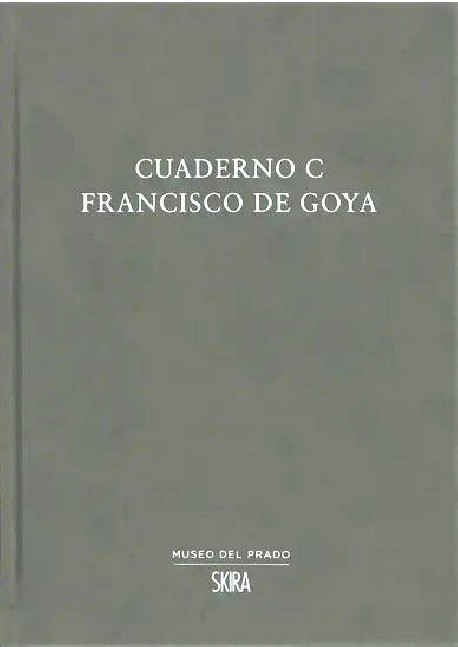No products
Product successfully added to your shopping cart
There are 0 items in your cart. There is 1 item in your cart.
Our webstore uses cookies to offer a better user experience and we consider that you are accepting their use if you keep browsing the website.

Drawing & Engraving
- New Art Books
- Exhibition catalogue
- Highlights
- Art Book Sale
- Museum's Shop & Gifts
- Bilingual art books and foreign editions
- Children's Books
- Art History
- Painting
- Architecture
- Sculpture
- Drawing & Engraving
- Photography
- Contemporary art
- Decorative Arts & Design
- Art Techniques
- Critics
- Entertainment art books
- Civilisations
- Partners Reviews
Francisco de Goya - Cuaderno C
The Museo del Prado presents this unique book that reproduces the Francisco de Goya's skechbook Cuaderno C. Produced during the War of Independence and the years of repression that followed (1808-1820), it covers a wide range of subjects, from aspects of daily life to dreamy visions of the night world, from the prisoners of the Inquisition to monastic life.
Shipped within 3 to 6 days
| Model | 9782370741387 |
| Artist | Francisco de Goya |
| Author | José Manuel Matilla |
| Publisher | Skira / Museo del Prado |
| Format | Ouvrage relié |
| Number of pages | 304 |
| Language | Multilingue - Français, English, Deutsch, Italiano, Español |
| Dimensions | 225 x 165 |
| Published | 2020 |
| Museum | Museo del Prado, Madrid |
Sketchbook C (1814–1823) encapsulates the ambivalence of Goya´s work perhaps more than any other. Together with sketches unquestionably based on people and events witnessed in the desolate streets and rural areas of Spain, Goya presents visions of the situation and those living through it that are born out of his imagination but endowed with undeniable allegorical power. On observing the different drawings, it is sometimes hard to make out the boundary between the real and the imaginary, which does indeed hardly appear to exist in many cases.
The first pages are populated by marginal characters, as if they had a testimony of real Spain. Then come beings born out of the artist’s visions and nightmares, followed by a long and extraordinary series of scenes of incarceration and cruelty on the part of the Inquisition – an institution suppressed during the Liberal Triennium (1820–1823) – which constitutes a highly eloquent protest against the suffering caused by injustice.
The next group shows the consequences of the confiscation of ecclesiastical property – undertaken during the Triennium when the Constitution of 1812 was reinstated – which led to the closure of numerous monasteries and convents, forcing monks and nuns to renounce their vows and start a new life outside the safety of their walls. Freedom, reason and justice are the subjects of a further group of drawings that attest to Goya’s hopes for the reforming policy of the Liberal Triennium.
In this facsimile edition, all the known drawings are reproduced, as well as the back of the sheets. His captions, which often serve as titles or comments on the various images, are highly revealing because the ambiguities on which they play prompt consideration of his real intentions. In this sense, word and image form an indivisible whole to be grasped all together. Moreover, the words often constitute links between different drawings, which take on their real meaning when “read” one after the other like the pages of a book. Only in this way is it possible to discern the sequences and thematic groups conceived by Goya during the creation of Sketchbook C.
Recently viewed items











